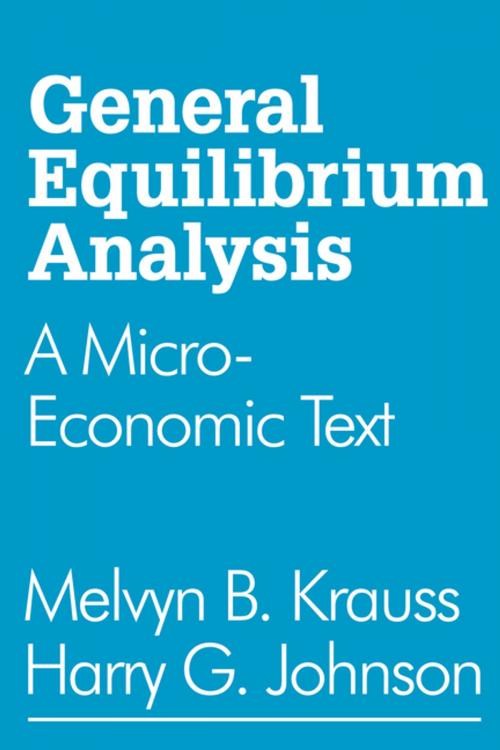| Author: | Harry G. Johnson | ISBN: | 9781351518017 |
| Publisher: | Taylor and Francis | Publication: | July 12, 2017 |
| Imprint: | Routledge | Language: | English |
| Author: | Harry G. Johnson |
| ISBN: | 9781351518017 |
| Publisher: | Taylor and Francis |
| Publication: | July 12, 2017 |
| Imprint: | Routledge |
| Language: | English |
This is a new kind of textbook in microeconomic theory. In place of the usual concentration on partial equilibrium analysis and discussion of a standard series of topics, the authors seek to introduce the student from the start to the general equilibrium approach to microeconomics, in the form of the two-sector model. This model is then applied to a variety of subjects in different special fields of economic analysis: welfare economics, international trade, public finance and income distribution. This book represents a very different approach to the teaching of micro-economic theory than normally followed, and one that will be of greater long-run value to the serious student of economics. In place of the usual textbook development of the subject as traditionally conceived through topics of increasing complexity and analytical difficulty, using partial equilibrium techniques of analysis, the book concentrates on the exposition and application of a more logically integrated set of tools that have been found of greater use in the analysis of problems arising not only in traditional micro-economics but also in a number of fields of economics that have customarily been hived off into separate specialized advanced courses. General Equilibrium Analysis starts with the description of the two-sector model and how these two sectors are built based on the individual micro-units in which they made up of and how they fit into the concept of the circular flow of income. Subsequent chapters deal with the evaluation of changes in factor endowment, demand preferences and technical progress by means of the model; and the theory of government, which includes both the theory of government expenditure, or public goods, and the theory of government tax and/or subsidy programmes-changes in budgetary scale, tax substitution and expenditure substitution. The model is then extended to an open economy-the so-called "two by two by two"--to consider both the normative effect of inte
This is a new kind of textbook in microeconomic theory. In place of the usual concentration on partial equilibrium analysis and discussion of a standard series of topics, the authors seek to introduce the student from the start to the general equilibrium approach to microeconomics, in the form of the two-sector model. This model is then applied to a variety of subjects in different special fields of economic analysis: welfare economics, international trade, public finance and income distribution. This book represents a very different approach to the teaching of micro-economic theory than normally followed, and one that will be of greater long-run value to the serious student of economics. In place of the usual textbook development of the subject as traditionally conceived through topics of increasing complexity and analytical difficulty, using partial equilibrium techniques of analysis, the book concentrates on the exposition and application of a more logically integrated set of tools that have been found of greater use in the analysis of problems arising not only in traditional micro-economics but also in a number of fields of economics that have customarily been hived off into separate specialized advanced courses. General Equilibrium Analysis starts with the description of the two-sector model and how these two sectors are built based on the individual micro-units in which they made up of and how they fit into the concept of the circular flow of income. Subsequent chapters deal with the evaluation of changes in factor endowment, demand preferences and technical progress by means of the model; and the theory of government, which includes both the theory of government expenditure, or public goods, and the theory of government tax and/or subsidy programmes-changes in budgetary scale, tax substitution and expenditure substitution. The model is then extended to an open economy-the so-called "two by two by two"--to consider both the normative effect of inte















